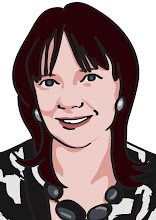 |
| Kanyas Kitchen |
Karma yoga is the yoga of action. In karma yoga we devote our actions for the benefit of others and the world or, according to our beliefs, we dedicate the fruits of the work to God (or our universal spirit). It is selfless service, where we expect no reward. We move towards 'non-attachment' to the results of our actions. Eventually we may experience that we are not the doer but that the work is done through us.
It was the avowed intent of Swami Satyananda , who passed Dec 2009, that no child in his panchayat (district) would go to bed hungry. He said, on many occasions, that he would feed every child at least once every day.
To this end, a vast warehouse was bought and renovated by the Satyananda ashram in India to be the dining hall & store (and kitchen) to feed 1500 boys and girls, who would otherwise go hungry Named Kanya Kitchen, the project is now fully operational. Here, the 1500 kanyas (girls) and batuks (boys) who already receive ashram care, education and training, are fed daily.
 |
| Sw Satsangi with the children |
As an ongoing tribute to the life and works of Sri Swamiji, I am dedicating all the monies from my January yoga class to help raise the funds required to feed these children for three or more days. All funds raised through yoga will be matched with a donation from my PR business, effectively doubling the donation.
PLEASE attend the January class, and bring your friends and family too, by doing so you are helping to save children's lives and performing your own Karma Yoga.
I will give the money to Satyaprakash at SYC Birmingham , who will be travelling to Rikhia in February 2011 and will carry the donation by hand (thus safe arrival at destination is guaranteed).
If you have the means, you may wish to give directly the money needed to feed the children for one day - I will gladly advise on how best to do this.












